Airborne
NASA scientists just filmed something troubling in Greenland
9 May, 2019
Scientists aboard a NASA airplane swooped over some of Greenland's largest glaciers on Monday, spotting melted ice and raging rivers.
It's significant, because though it's not nearly summer, large blue ponds have already formed on the icy ground. NASA’s Operation IceBridge researchers observed this as part of their mission to watch for changes in Earth’s giant masses of polar ice. Greenland, in particular, has been melting at an accelerated rate for some two decades.
"Although the story of the summer of 2019 in Greenland hasn’t yet been written, it's starting on a worrying note," said Joe MacGregor, the project scientist for Operation IceBridge.
MacGregor is on land in the U.S., but his IceBridge colleague, glaciologist Brooke Medley, captured footage of the early melt creating big pools of water, seen below.
While such profound early season melting isn't unprecedented, typically these melt ponds form in late May to early June, explained MacGregor. This spring, there's one obvious culprit: really warm temperatures. Last week in Greenland — one of the coldest parts on Earth — temperatures measured in the upper 50s to low 60s Fahrenheit, he said.
"That's quite warm," said MacGregor.
In fact, it was significantly warmer than usual across nearly the entire land mass — home to a thick sheet of ice two and half times the size of Texas. Overall, unusually warm Arctic temperatures are no longer a surprise. It's the fastest warming region on Earth.
This early season melting is occurring in west central Greenland, home to Greenland's enormous and fastest-moving glacier, Jakobshavn Isbræ. NASA's IceBridge scientists, aboard the agency's P-3B Orion research plane, visited Jakobshavn three times, along with other nearby, massive glaciers.
Greenland scientists are especially interested in Jakobshavn's future, as this river of ice — which is over a mile thick — penetrates deep into the heart of Greenland. What's more, the glacier's outlet has proven extremely sensitive to ocean temperatures (which in the long-term are warming). Here, the front of the glacier that meets the sea acts like a plug or cork, holding masses of ice back that sit frozen in a long channel. "When I say it's like the cork on a champagne bottle, this really is a channel that potentially could tap the ice on the rest of the ice sheet," NASA oceanographer Josh Willis, who leads missions to Greenland, told Mashable in March.
Overall, there are two big trends unfolding on Greenland. The outlet glaciers, like Jakobshavn, are accelerating their melt into the ocean, while warmer temperatures on land are melting the bulk of the inland ice. This is shrinking the ice on Greenland, while incrementally boosting sea levels.
As of now, the Greenland ice sheet is losing around 250 billions tons of ice each year, said MacGregor. Since the early 1980s, when satellites began collecting good, reliable data from Greenland, the ice loss has accelerated sixfold.
2019's early melting of ice and snow, which produces these dark blue melt ponds, exacerbates this melting trend. The pools are much darker than the ice, so they absorb sunlight, rather than reflect it. What's more, the exposed ice beneath the melted snow is darker than the snowy surface, which means that surface absorbs even more heat. This hastens more melt, in an already melting world.
"The melt has the potential to accelerate," said MacGregor.




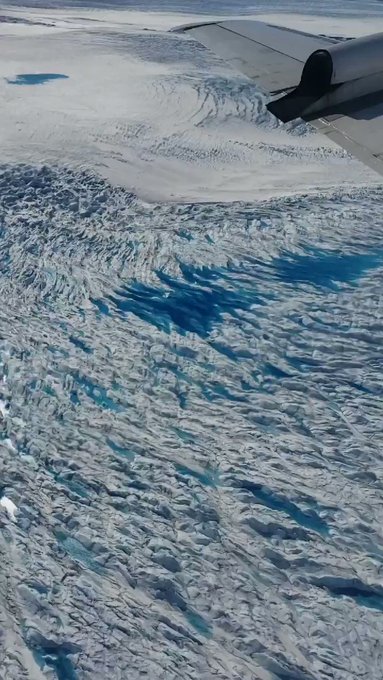

 observed surface melt north of Jakobshavn
observed surface melt north of Jakobshavn 

 , the early onset of melt over Greenland is concerning for
, the early onset of melt over Greenland is concerning for 

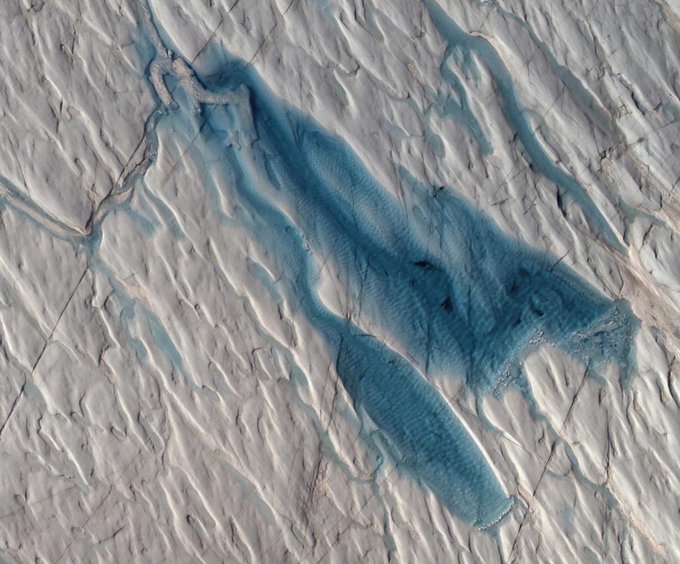
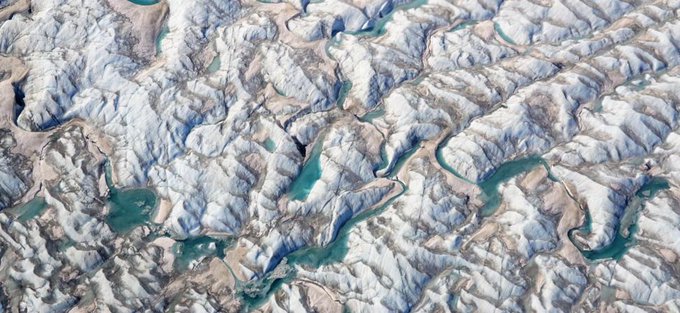
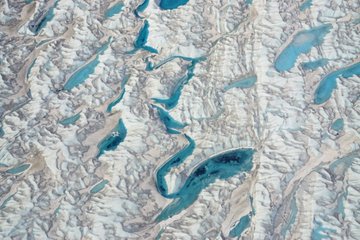
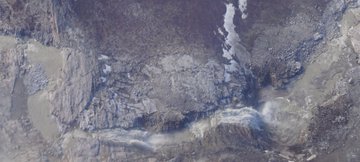
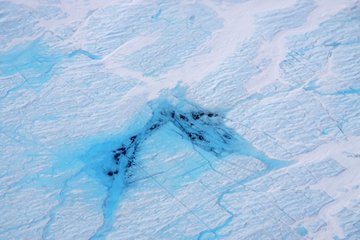


 .
.
No comments:
Post a Comment
Note: only a member of this blog may post a comment.